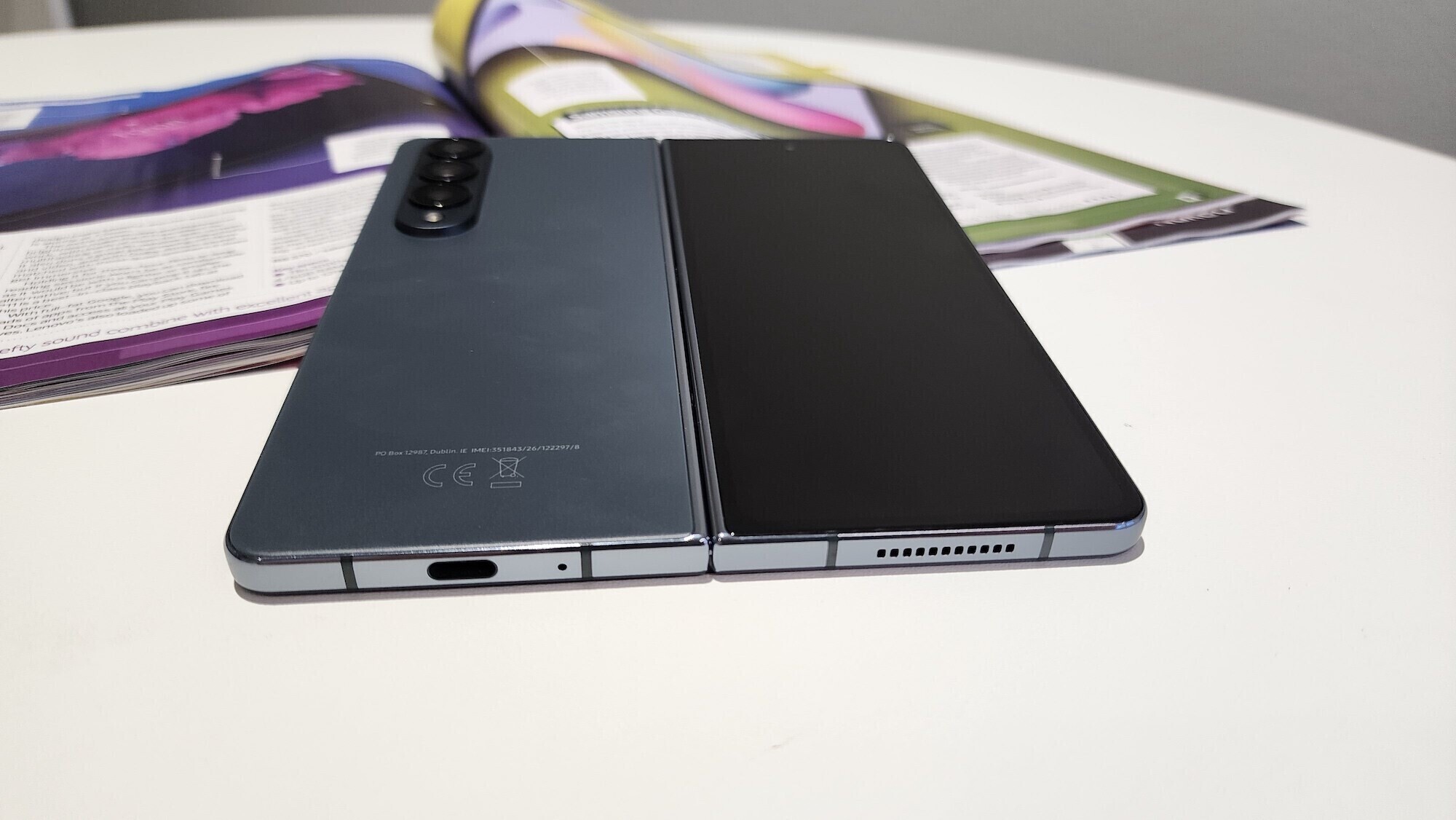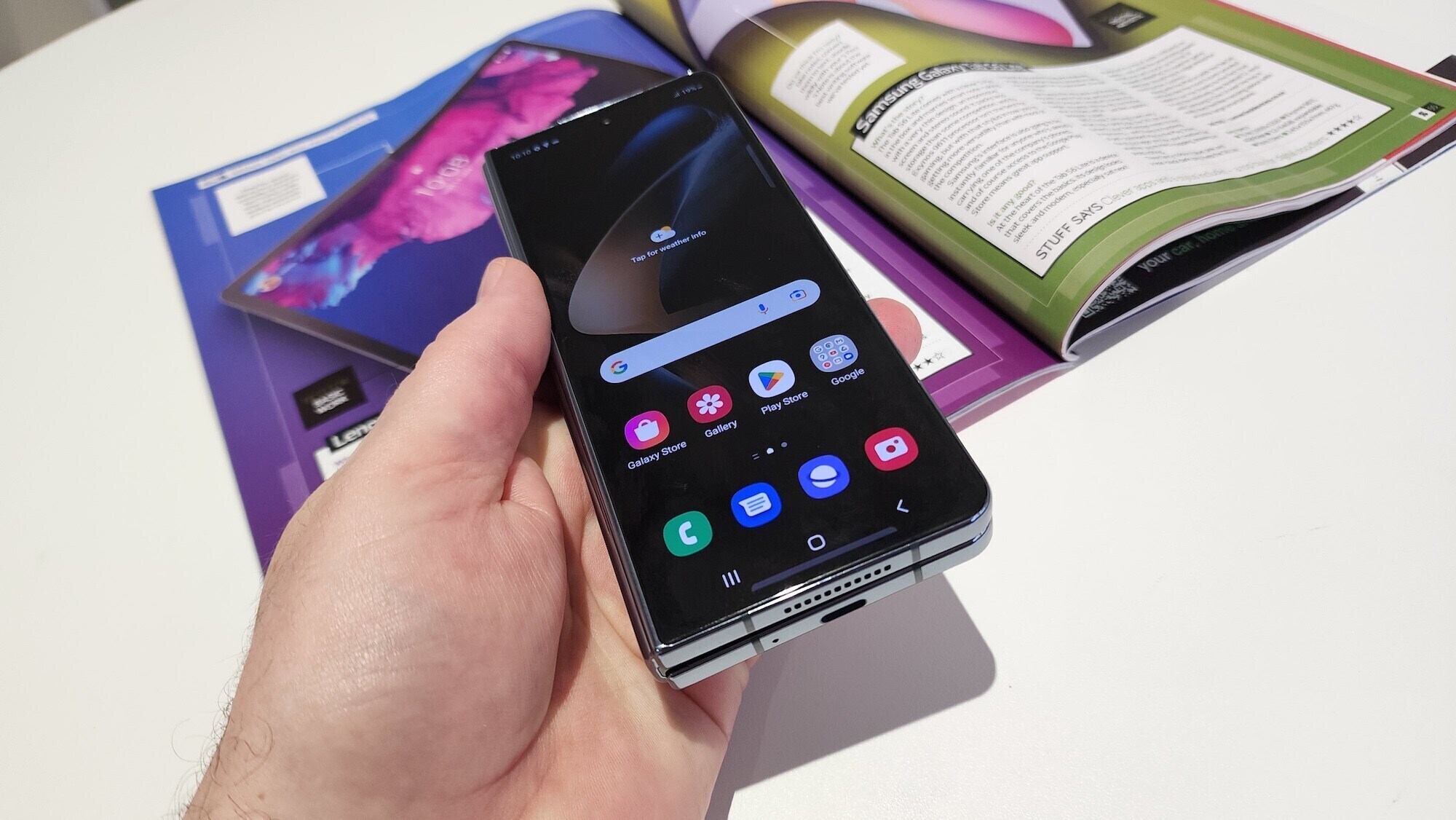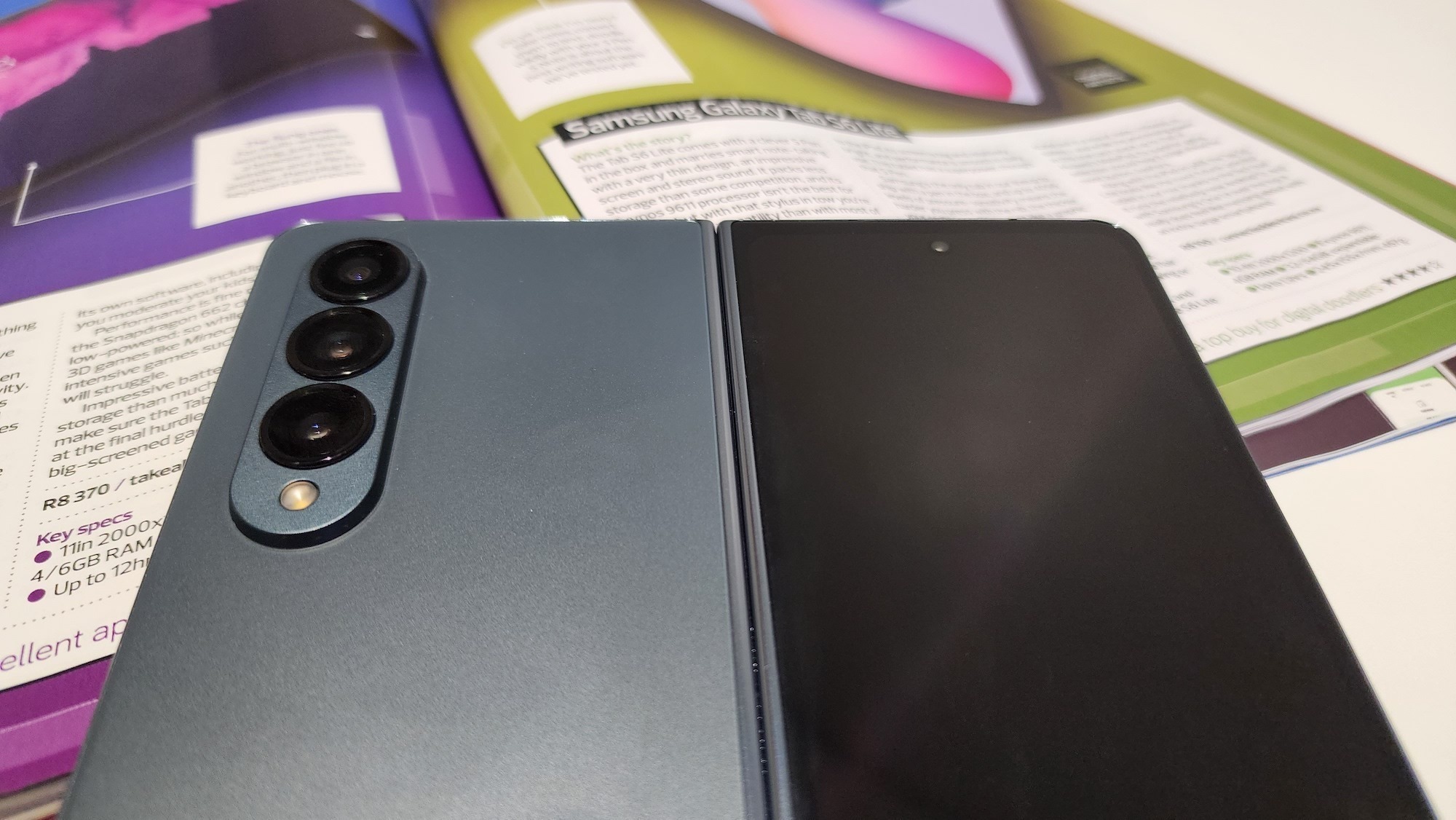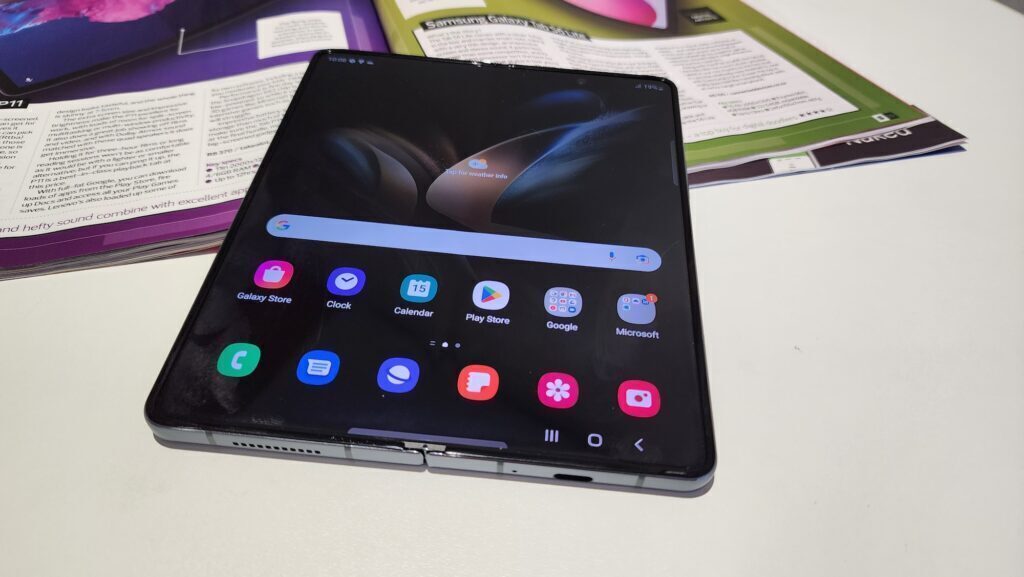There's no doubt that Samsung's made its best folding phone with the launch of the Fold 4. But we can't help but feel that the company would have made it in 2021 if the Snapdragon 8+ Gen 1 was available. Not much has changed and the items that have are almost invisible. The Fold 4 is worth considering if you haven't already dipped a toe into the folding waters, but if you have... yeah, maybe wait another year.
-
Design
-
Performance
-
Battery
-
Camera
-
Price
Usually, when Stuff does something with a flippant headline like the one above, it means the subject actually is a big deal. This review of the Galaxy Fold 4 from Samsung is a rare exception. Samsung’s newest phone really is its best foldable phone so far. It just so happens that the gap between this and the Galaxy Fold 3 isn’t nearly as wide as we’d like it to be.
Oh, there’s a gap. The problem is that it’s not where it’s supposed to be. The folding-in-half part of the phone, the major reason you’re paying the price of entry, has barely changed. In the places where it has, the alterations are all but invisible. The gap is the same as every other annual Samsung release — an incremental update of processing power. If that’s what you care about, buy the Galaxy S22 Ultra. It’s just as powerful, its camera tech is better, and it’ll cost you at least R10k less.
Familiar face

The similarities between the Galaxy Fold 4 and the Fold 3 weren’t exactly unexpected. We took a deeper look at the phone’s dimensional resemblances during our first hands-on with the Fold 4. There are differences in weight and measurement but you’ll need a very educated eye to tell them apart. There are also slight changes between the screens, though their overall size remains unchanged. Finally, there’s a new, lighter hinge that makes a very distressing crackling noise if you’re not expecting it.
Last year’s description still applies here, then. Unfolded, Samsung’s phone is a 7.6in OLED tablet, with a 4MP camera concealed beneath the folding screen. Folded, it’s a 6.2in OLED smartphone packing Gorilla Glass Victus+. Around the back (when folded), there’s a three-camera array set into a raised vertical cartouche. Along the right side, there’s a volume rocker and a fingerprint sensor.
There’s no headphone jack, but there is a USB-C port. Samsung’s conferred IPx8 water resistance on the Galaxy Fold 4, so you shouldn’t manage to drown it. Sand will cause issues for the hinge and display, should it manage to creep under there, but that’s a problem common to every folding smartphone on the planet. Except those that use two separate glass displays, like Microsoft’s Surface Duo 2.
Can’t complain

There’s nothing to complain about (okay, there’s one thing) if you look under the somewhat fragile skin. The display is the phone’s only real weak point. The outer surfaces are either toughened glass or lightweight metal, giving the Fold 4 a seriously premium feel. Even the screen seems like it would handle the rigours of everyday use but maybe that’s just us getting used to seeing it around.
Deeper inside, there’s a Snapdragon 8+ Gen 1, 12GB of RAM, and 256GB or 512GB of storage. You’ll pay an extra R4,000 to double your storage capacity, but it’s an option for you. The Fold 4 will match favourably with almost any 512GB notebook in terms of power or performance. The obvious advantage these machines have over Samsung’s mobile phone is a full-sized keyboard and screen. Still, let’s see you stick a 13in notebook in your pocket and go for a jog. Thought so.
Now for the complaint — these internals are available elsewhere, cheaper, from Samsung’s own lineup. It’s great that they’re an option here but they’re only a selling point if the folding action has completely captured your imagination. If the feature feels like a gimmick to you, save yourself R10,000 and just buy a Galaxy S22 Ultra. That’s got the better camera chops anyway.
Eyes on you

There is one substantial upgrade over the Galaxy Fold 3 available here. Samsung fitted its last folding smartphone with a trio of 12MP camera sensors. They were… okay. But coming out against the company’s own S21+ and S21 Ultra handsets, camera performance really should have been better.
Well, Samsung heard the criticism. More or less. A new 50MP main sensor with optical image stabilisation and a 10MP telephoto (with 3x optical zoom) replace their 12MP counterparts from last year. The 12MP ultrawide from 2021 was left untouched, as far as we can see. So was the camera bump. Well, the design, anyway. We didn’t measure the thing with a micrometer or anything.
Camera performance sees a jump as a result. If the poor camera stopped you from picking up a Fold 3, you might be sold this time around. It’ll match anything the Samsung Galaxy S22 is capable of because it’s the exact same camera setup. 30x zoom isn’t the best experience you’ll find on a Samsung phone — the larger S22 phones win there — but it’ll perform admirably in daylight conditions. It’ll even impress at night if you give it the right nudge in the settings. But the camera still isn’t the main reason to purchase the Galaxy Fold 4.
Samsung Galaxy Fold 4 verdict

It costs at least R37,000 to own a Galaxy Fold 4. If you want the 512GB version, you can up that price to R41,000. The starting price is R1,000 cheaper than last year, but as the meme says, the price is too damn high! Worse, not enough has been done to justify the cost. There are undeniable upgrades, but the phone’s unique features are no more compelling than last year. If you must own a folding smartphone, just buy the Fold 3. As long as you don’t buy it directly from Samsung (it’ll still cost you R38k), you can own one for about R26,000. The folding features, the whole reason for owning one of these, aren’t much different at all. You should only splash out on a Fold 4 if you’re spending someone else’s money on it.




